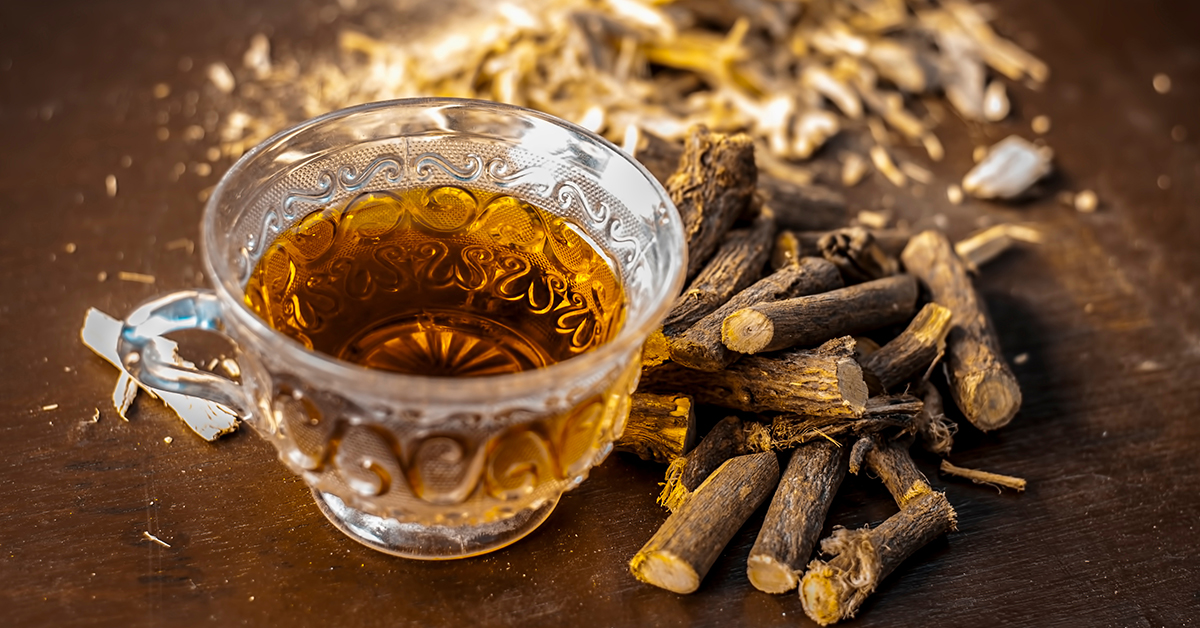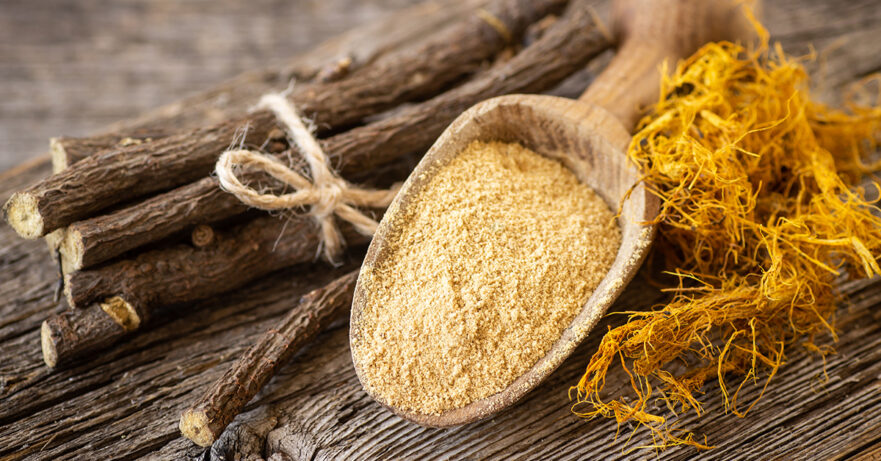In this monograph about licorice:
📖 Introduction | 🌱 Botanical Description | 📜 Traditional Uses | 🔍 Phytochemistry | ✨ Applications and Uses | 🛡️ Safety Profile
📖 Introduction
Licorice (Glycyrrhiza glabra) is a perennial herb treasured in various traditional medicine systems, including Chinese and European herbalism, primarily for its soothing, anti-inflammatory, and sweetening properties.
Licorice root is renowned for supporting the respiratory system, aiding digestion, and enhancing adrenal gland function. The root is also appreciated for its antiviral and hepatoprotective effects.
| English Name | Licorice |
| Latin Name | Glycyrrhiza glabra |
| Parts Used | Root |
| Traditional Uses | Sore throat, digestive issues, adrenal support |
| Herbal Actions | Anti-inflammatory, demulcent, expectorant |
🌱 Botanical Description
Scientific Classification
Glycyrrhiza glabra belongs to the Fabaceae family.
Physical Characteristics
Licorice has tall, erect stems with pinnate leaves comprised of several leaflets, small purple to pale whitish-blue flowers, and elongated seed pods. The roots are long, branched, and brown on the outside with yellow interiors.
Natural Habitat and Cultivation Details
Originally native to parts of Europe and Asia, licorice now grows extensively in several countries worldwide. It prefers well-drained soils in sunny locations and is often cultivated for its valuable roots, which are harvested in the autumn of the plant’s fourth year.
📜 Traditional Uses
Licorice root has historically been used to soothe gastrointestinal problems such as stomach ulcers, heartburn, and colitis. Due to its expectorant and anti-inflammatory properties, it is also employed in treating respiratory ailments like bronchitis and asthma.

🔍 Phytochemistry (Active Constituents)
Licorice contains several active compounds that contribute to its medicinal efficacy:
- Glycyrrhizin: A potent compound over 50 times sweeter than sugar known for its anti-inflammatory and immune-boosting effects. It is also responsible for some of the adverse effects of licorice if consumed in large quantities.
- Flavonoids: These compounds provide antioxidant benefits and contribute to the herb’s ability to support respiratory health.
- Isoflavones: Known for their estrogenic activity, assisting in balancing hormonal functions.
✨ Applications and Uses
Licorice serves multiple therapeutic purposes across various body systems, making it versatile in herbal medicine practices.
- Digestive health: Licorice is extensively used to soothe gastrointestinal issues, acting as a mild laxative and helping to heal stomach ulcers.
- Respiratory support: The herb is incorporated into syrups and teas to ease coughs and sore throats and improve bronchial issues.
- Adrenal support: Licorice is recognized for supporting adrenal function, which is particularly beneficial for individuals with chronic stress or adrenal fatigue.
🛡️ Safety Profile
Licorice is generally safe when consumed in moderate amounts, typically defined as no more than 2-5 grams of the root per day for adults.
However, excessive consumption, particularly more than 20 grams per day, can lead to adverse effects such as hypertension, edema, and hypokalemia, primarily due to the glycyrrhizin it contains. It should be used cautiously by individuals with high blood pressure, kidney disease, or those taking heart medication.
Excessive use can also cause pseudoaldosteronism, leading to serious health issues.
Pregnant and breastfeeding women should avoid high doses of licorice.
As with any herbal supplement, consulting a healthcare provider before beginning any new treatment is advisable, particularly for those with existing health conditions or those on other medications.
📃 Related Posts
🌱 Related Herbs

